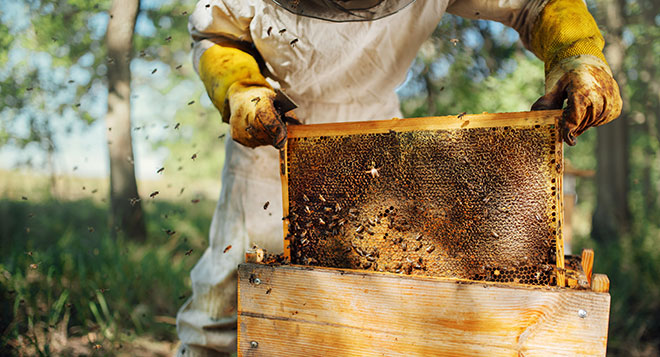Light technology used to detect if honey fraud.
 Under the Innovate UK feasibility project at AIPT-Nanoscience Research Group, Aston University, and Industrial Partners (Scottish Bee Ltd. and BBKA), the development of fast and reliable methods to assess honey quality using fluorescence excitation-emission (FLE) spectroscopy linked with machine learning data analytic methods was undertaken. A standard database for 100 natural-quality ISO standard honey samples obtained from different botanical origins, such as borage, heather, acacia, etc., was developed for comparison and to assess the quality of the honey samples. This approach aimed to address the limitations of current state-of-the-art techniques, such as chromatographic methods, NMR, DNA analysis, sensory analysis, and pollen study, which were either quickly becoming obsolete or were costly, time-consuming, and required specialized personnel and equipment.
Under the Innovate UK feasibility project at AIPT-Nanoscience Research Group, Aston University, and Industrial Partners (Scottish Bee Ltd. and BBKA), the development of fast and reliable methods to assess honey quality using fluorescence excitation-emission (FLE) spectroscopy linked with machine learning data analytic methods was undertaken. A standard database for 100 natural-quality ISO standard honey samples obtained from different botanical origins, such as borage, heather, acacia, etc., was developed for comparison and to assess the quality of the honey samples. This approach aimed to address the limitations of current state-of-the-art techniques, such as chromatographic methods, NMR, DNA analysis, sensory analysis, and pollen study, which were either quickly becoming obsolete or were costly, time-consuming, and required specialized personnel and equipment.
FLE spectroscopy mapped the molecular fingerprints of honey samples with the physical phenomenon of spectroscopic fingerprint recording via light matter interaction. The molecular fingerprints identified chemical constituents, such as aromatic amino acids, phenolic compounds, Maillard products, and vitamins and riboflavin. Changes in molecular fingerprints were assessed by viewing changes in spectral shape, peak position, peak intensity, and additional peaks.
The data were used to format a report that assessed the quality of the honey samples and adulteration. Beekeepers in Shropshire received the same report as produced for Adam Henson on the BBC Countryfile, which highlighted the fake honey being sold in the UK and around the world.
More info can be found at Aston University website and on the BBC Countryfile episode:
https://www.bbc.co.uk/iplayer/episode/m001sxm4/countryfile-dumfries-house
Back to Case Studies

